Navigating domain name disputes can feel overwhelming, but it doesn't have to be. Whether you're a business owner trying to protect your brand or an individual seeking to reclaim your online identity, understanding the process is key. In this article, we'll break down the essential steps you need to take when drafting a letter for domain name disputes. Ready to take control of your online presence? Let's dive in!

Clear Identification of Parties
Domain name disputes can involve various parties, including individuals, companies, and organizations. The complaining party usually holds rights to a trademark, service mark, or name, while the respondent is the current registrant of the domain name in question. The complaint should clearly identify both parties involved. For instance, the complaining party could be "ABC Corporation," a registered entity in the United States, specializing in software development, with a trademark for "ABC Software" registered with the United States Patent and Trademark Office since 2010. The respondent might be "John Doe," an individual who registered the domain name "abcsoftware.net" in 2021. Accurate identification enhances clarity in the dispute resolution process under guidelines established by the Uniform Domain-Name Dispute-Resolution Policy (UDRP).
Detailed Account of the Dispute
Domain name disputes often arise between parties over the ownership of specific web addresses registered under the Internet Corporation for Assigned Names and Numbers (ICANN) rules. A recent case involved the domain name "exampledomain.com," registered in 2021. The complainant, a business established in 2019, operates under the name "Example Company," offering services in the digital marketing sector. The respondent, registered the domain name without any prior affiliation or rights to use the term "Example," which is a trademarked name since 2018. The dispute escalated when the complainant discovered the respondent using the domain to host a competing website, causing brand confusion among consumers and diluting the strength of the established trademark. The involved parties attempted informal resolution in July 2023, but no agreement was reached, necessitating a formal dispute resolution process. Noteworthy evidence includes registration documents, trademark certificates, and communications between both parties. The complainant seeks a transfer of the domain to restore brand integrity and customer trust.
Legal Grounds for the Dispute
Domain name disputes often arise due to issues like trademark infringement or bad faith registration. Legal grounds for these disputes include the Anticybersquatting Consumer Protection Act (ACPA), enacted in 1999, which protects trademark owners from individuals who register domain names identical or similar to their registered trademarks with bad faith intent. Cases frequently involve well-known trademarks, such as Coca-Cola or Microsoft, which possess significant brand recognition globally. Additionally, the Uniform Domain-Name Dispute-Resolution Policy (UDRP) offers a framework for resolving conflicts regarding domain names. Parties may invoke common law rights or specific country trademark laws to assert their claims, establishing a solid basis for dispute resolution. Registration principles and proper use of domain names play critical roles in determining rightful ownership.
Desired Resolution or Action
Domain name disputes often arise from conflicts over ownership of web addresses, typically registered as '.com', '.net', or country-specific extensions. Desired resolutions can include transferring ownership to the rightful owner, removing infringing content hosted on the domain, or negotiating a settlement fee for rightful usage. Action steps may involve filing a complaint under the Uniform Domain-Name Dispute-Resolution Policy (UDRP), seeking mediation through organizations like the World Intellectual Property Organization (WIPO), or utilizing legal channels through local courts in jurisdictions such as the United States or the United Kingdom. Effective communication with domain registrars and adherence to established protocol are vital components in resolving these disputes efficiently.
Supporting Documentation and Evidence
Domain name disputes often arise due to conflicting claims over ownership. Supporting documentation serves as crucial evidence in these cases, showcasing relevant registration details, historical ownership records, and associated trademarks. Evidence can include registration certificates from registrars like GoDaddy or Namecheap, communications between parties regarding the domain name, invoices showing payments for domain registration, and similar cases where legal rulings may apply, like the UDRP (Uniform Domain-Name Dispute-Resolution Policy). Additionally, relevant trademark registrations from entities like the United States Patent and Trademark Office (USPTO) can substantiate claims of prior rights, demonstrating a legitimate interest in the disputed domain name. Properly organized and clear documentation strengthens a case, potentially aiding in resolution through arbitration or legal proceedings.

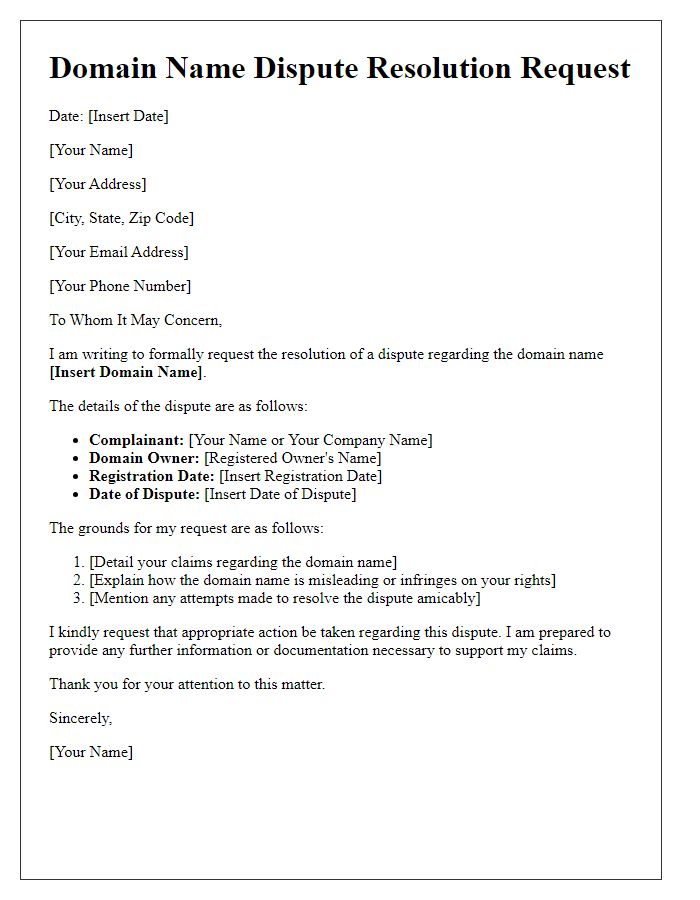

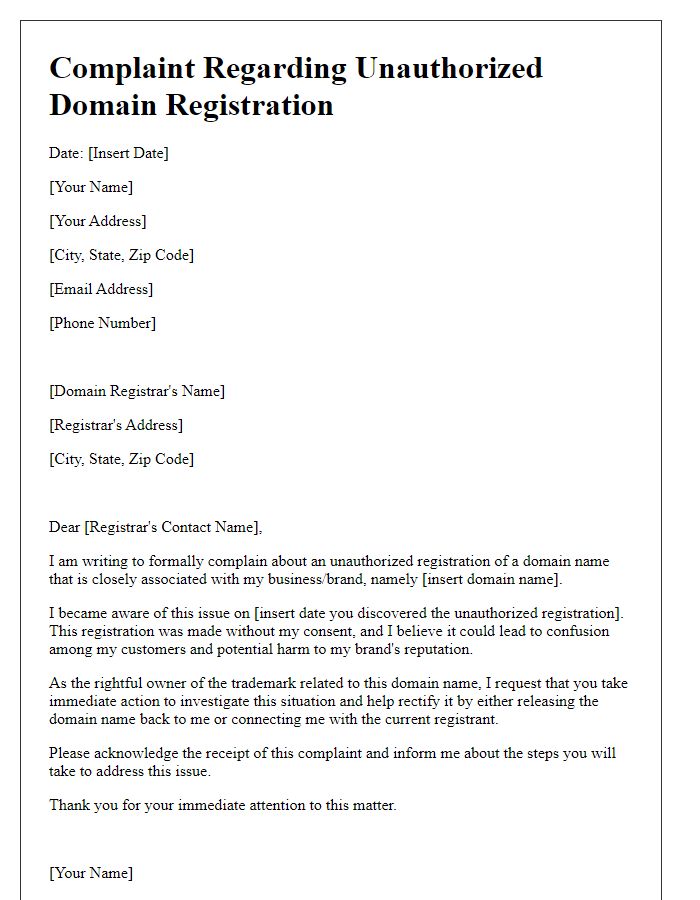
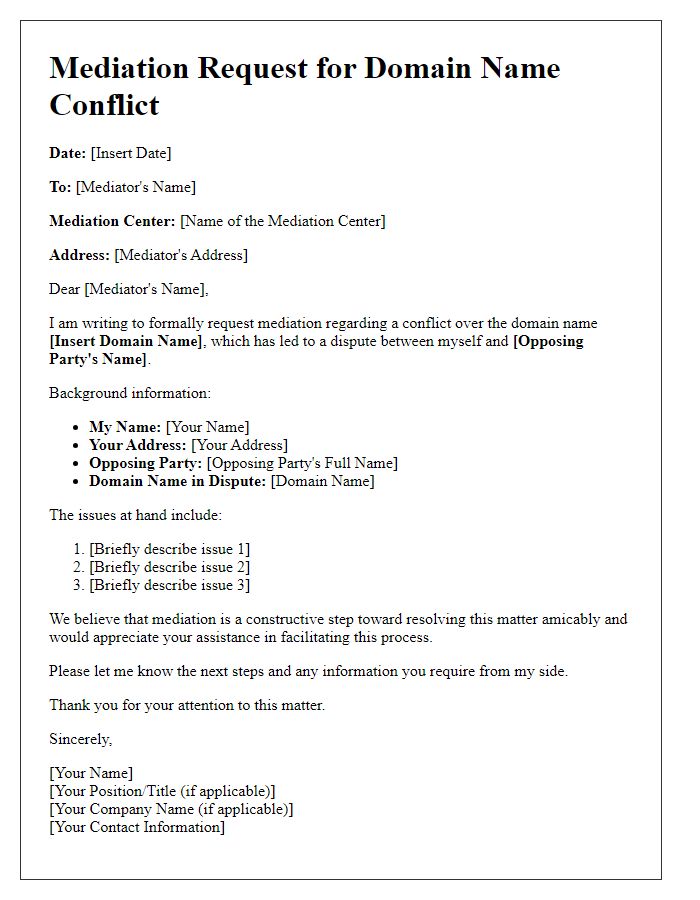
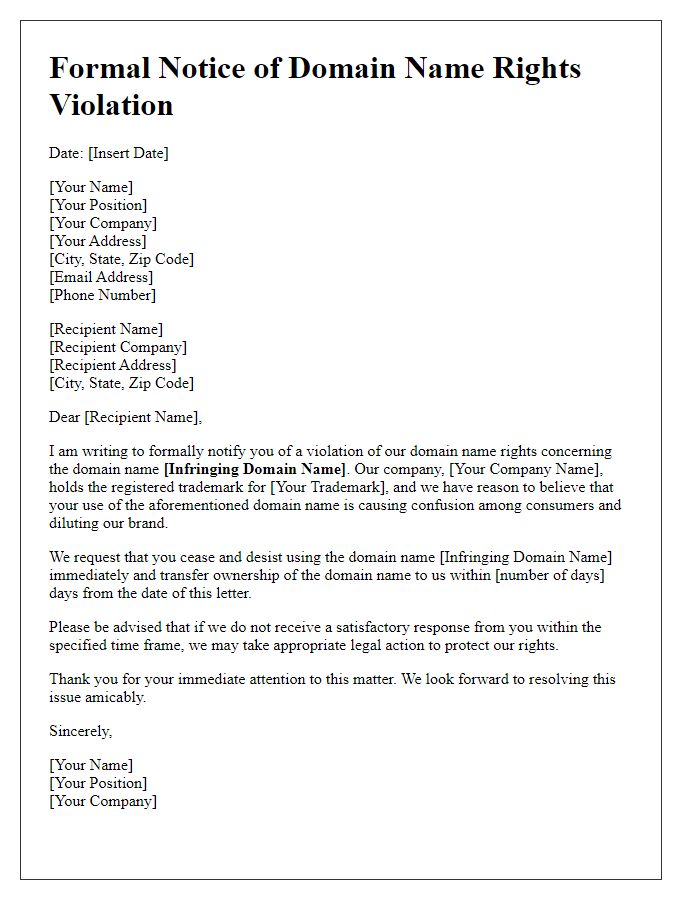
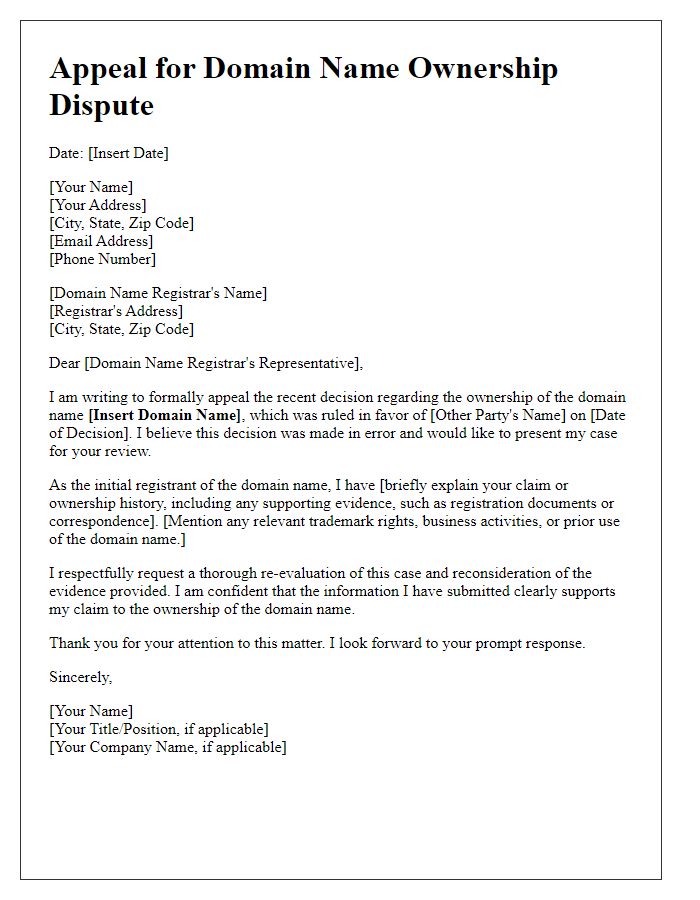
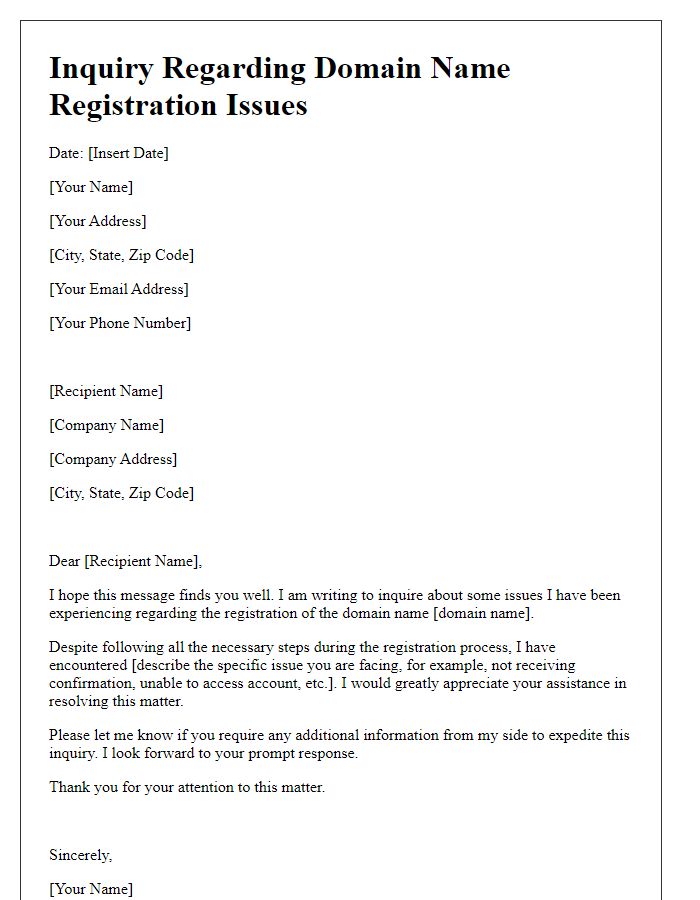
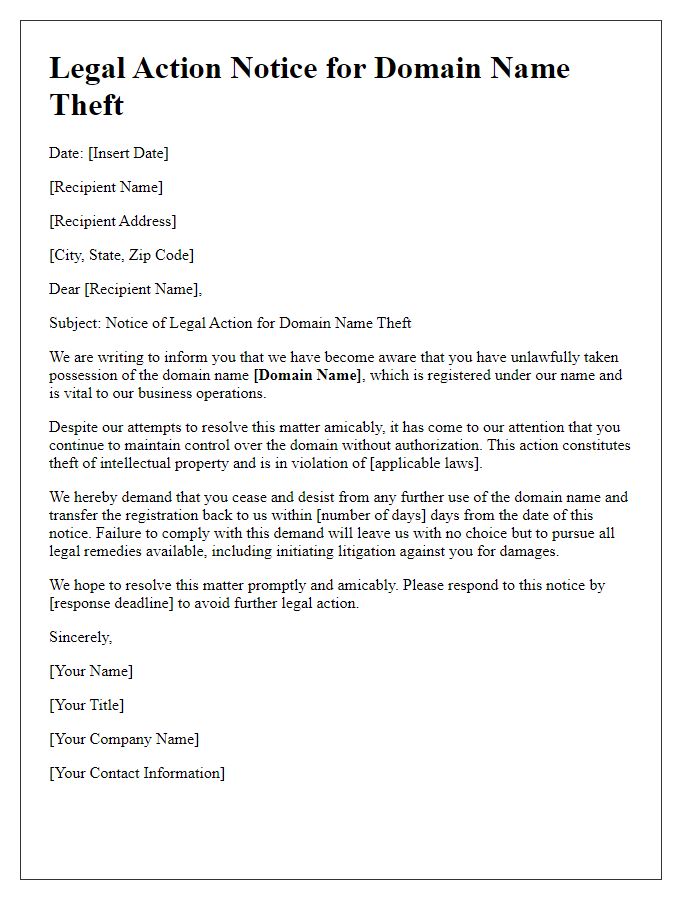
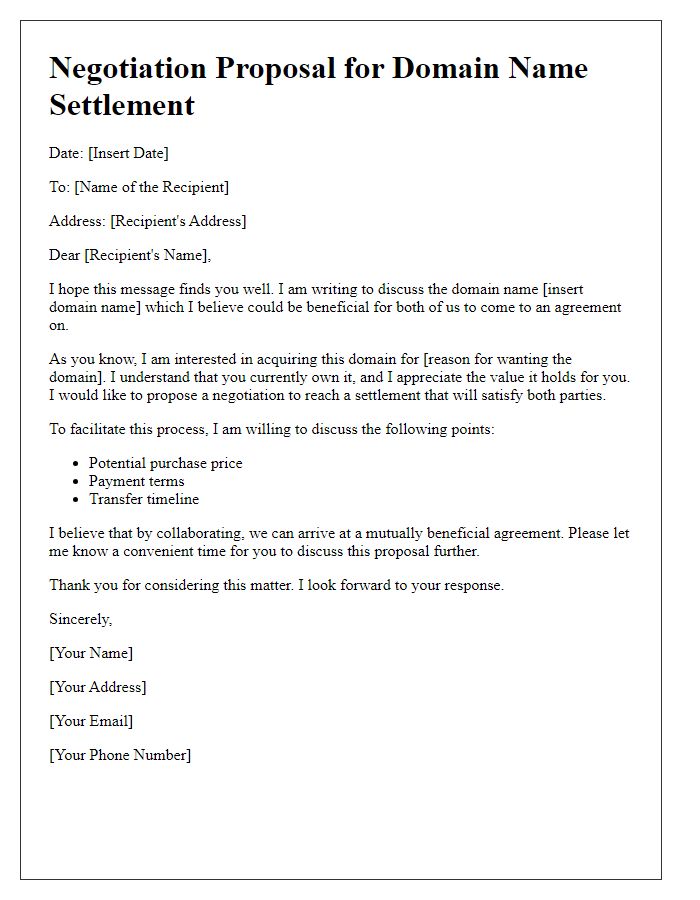
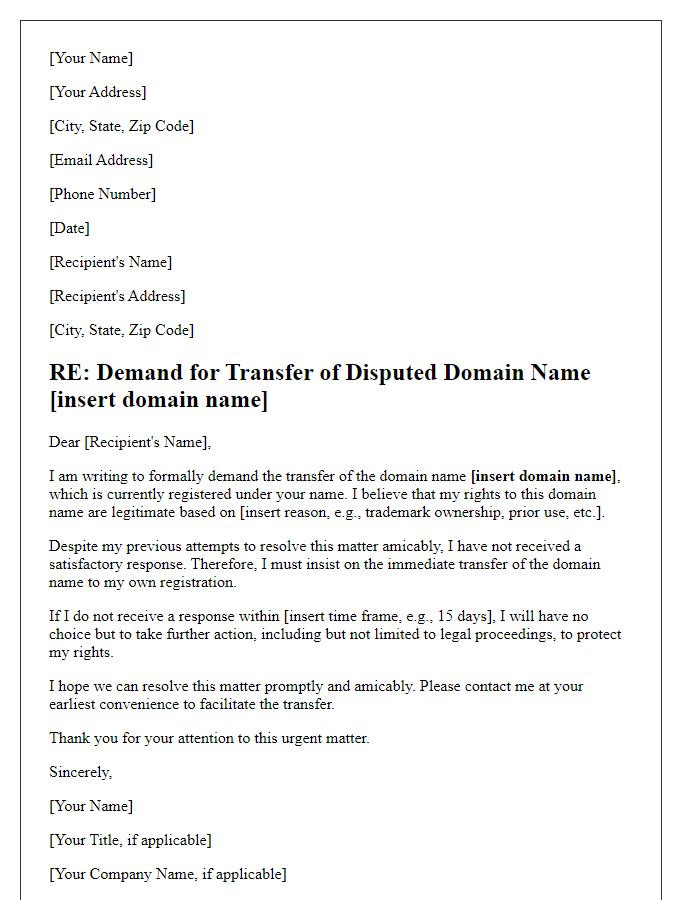


Comments